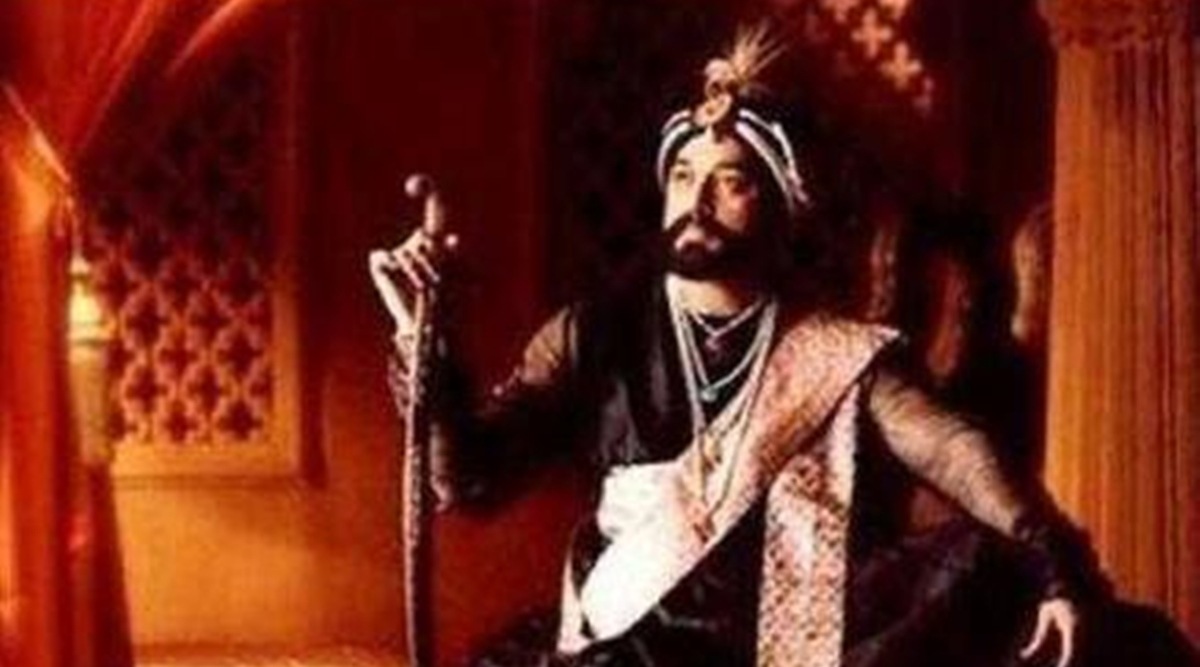 Actor Kamal Haasan as ‘Maaveeran’ Marudhanayagam, a 17th-century warrior
Actor Kamal Haasan as ‘Maaveeran’ Marudhanayagam, a 17th-century warriorIn his Independence Day speech, Tamil Nadu Chief Minister M K Stalin chronicled the lives of a dozen Tamil freedom fighters, each of whom took on the British in their own Dravidian territories before 1857 — the year that is usually marked as the start of the Indian freedom struggle. Vividly narrating the stories of each one of them, Stalin said the struggle for India’s freedom did not begin with the 1857 Mutiny or the Rebellion, but rather, much earlier.
When CM Stalin asserted that the pioneers of the Indian freedom struggle were from Tamil Nadu, he was making a claim that has long been part of the Tamil nationalist freedom narrative — one that is often used to counter what is seen as a bias among North Indian historians, who have had the literary, political, and moral upper hand in writing India’s modern history.
“We have been talking about this early history for a long time, but it was buried under the seemingly problematic Tamil nationalism and separatism tags associated with Tamil Nadu,” says Ramu Manivannan, retired professor of the University of Madras’s political science department.
As Stalin dedicated a good portion of his speech to vividly narrating the stories of each of these warriors, he also sought to send out a political message, all the way to Delhi, that Tamils and the Dravidian movement didn’t lag behind in their patriotism. Yet, the speech was also an effective curation of some of the most engaging biographical details of the pre-1857 rebels.
Subscriber Only Stories
Stalin began with the story of Puli Thevar, who ruled Nerkattumseval, near Tenkasi in southern Tamil Nadu, and who, in 1755, told the East India Company that “not even a grain can be paid as tax”.
Another historical character Stalin spoke about was ‘Maaveeran (Great Warrior)’ Marudhanayagam, a 17th-century warrior who emerged as a commander of sepoys under the British, served as the ‘governor’ of Madurai and even defeated Hyder Ali in a battle. In 1764, Marudhanayagam, from Panaiyur adjacent to Sivagangai, took on the British in a spirited battle and was killed in 1764 after he refused to surrender. Two decades ago, actor Kamal Haasan announced that he would produce and act in a historical film on Marudhanayagam, though it is now one of Haasan’s many pending projects.
Kattabomman, an 18th-century king of Panchalankurichi in Tamil Nadu, is a household name in the state, someone whose daring resistance to the East India Company is often invoked to arouse Tamil pride. In 1799, Kattabomman was hanged to death for waging a war against the British. In his speech, Stalin had quoted Kattabomman, who famously said, “Ask me to donate, I will. Ask me to pay tax, I will not.”
“The letter written by Lieutenant Bannerman to the then (Madras) Governor Edward Clive said that the great warrior Kattabomman smiled at those who betrayed him, even as he walked towards the gallows,” Stalin said.
Many other warriors and their heroism figured in Stalin’s speech. Sundaralingam, captain of Kattabomman’s army, and his cousin Vadivu, who had launched a suicide attack on the British. Velu Nachiyar, “the first Indian queen who fought the British”, who mobilised a battalion of women to capture Sivagangai from the British. Kuyili, Velu Nachiyar’s army commander, who set herself ablaze and jumped into the armoury of the East India company — and who is often called the “first woman martyr” in Indian history.
Brothers Chinna Marudhu and Periya Marudhu, who faced British cannons with their valaris (a traditional, deadly weapon shaped like a boomerang). Dheeran Chinnamalai, who was sent to the gallows in 1805, and his captain and spy, Pollan, who was shot dead by the British. “Much before 1857, in 1806, sepoys from Vellore prison had already taught the British a lesson,” Stalin added.
While Tamils and Tamil politics are often seen as having inherent tendencies of separatism and nationalism, Stalin’s speech to mark 75 years of India’s Independence was an attempt at clarifying that there was individual and organised resistance in Tamil Nadu to the British. “For some, the freedom struggle began only with the Sepoy Mutiny in 1857, but Tamils had started it much before that… After Gandhi’s murder, it was Tamil reformist Periyar who wanted India to be known as ‘Gandhi Desam’,” Stalin said on August 15.